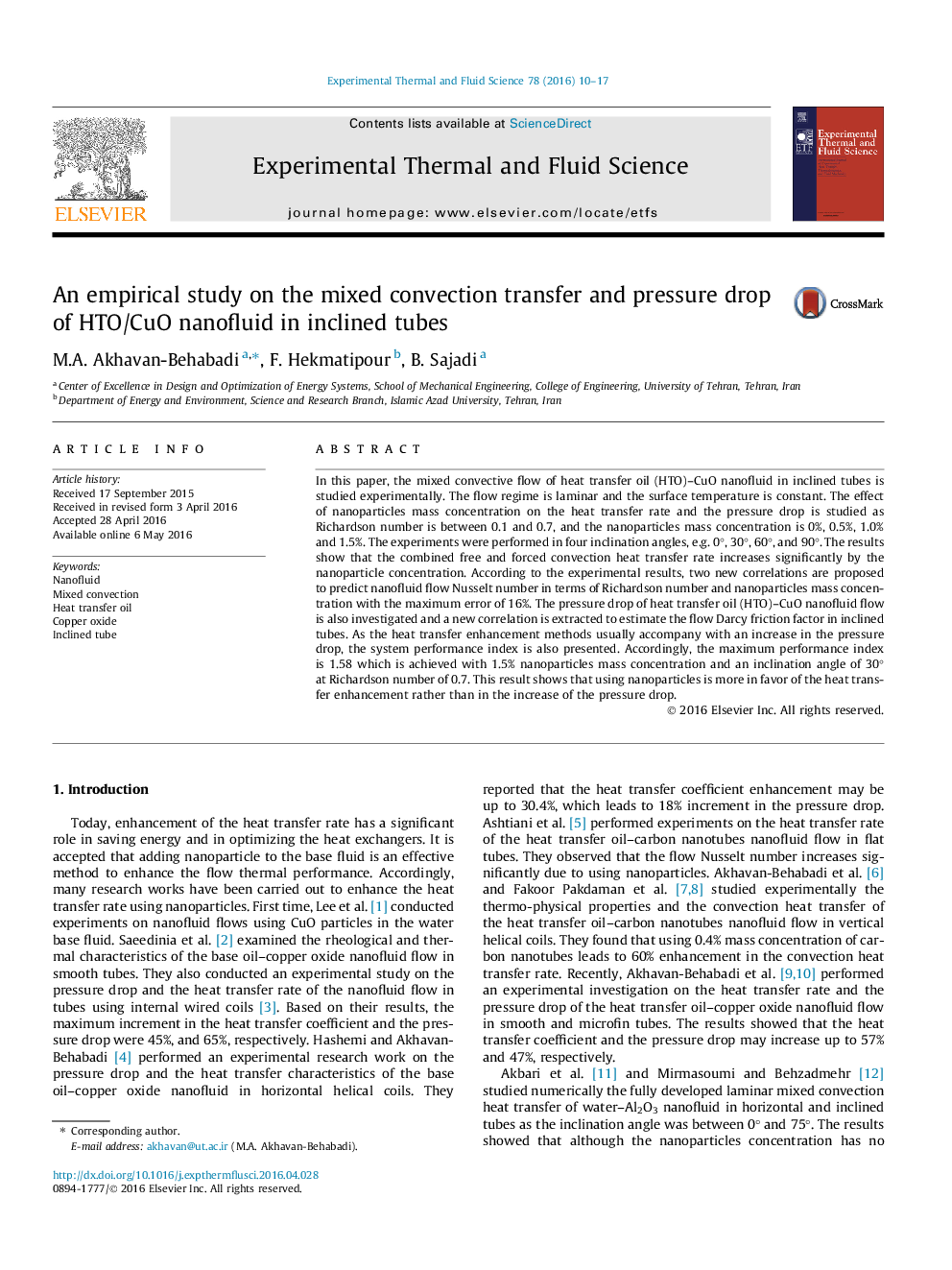| کد مقاله | کد نشریه | سال انتشار | مقاله انگلیسی | نسخه تمام متن |
|---|---|---|---|---|
| 650992 | 1457398 | 2016 | 8 صفحه PDF | دانلود رایگان |

• The pressure drop increment due to adding CuO nanoparticles to HTO may be up to 60%.
• CuO nanoparticles may enhance Nusselt number of HTO mixed flow up to 53%.
• Two new correlations are illustrated to evaluate the heat transfer of using nanofluid in inclined tube.
• One correlation is presented to predict the effect of using nanoparticle on friction factor.
• The performance index of HTO–CuO mixed flow in inclined tubes is more than unity.
In this paper, the mixed convective flow of heat transfer oil (HTO)–CuO nanofluid in inclined tubes is studied experimentally. The flow regime is laminar and the surface temperature is constant. The effect of nanoparticles mass concentration on the heat transfer rate and the pressure drop is studied as Richardson number is between 0.1 and 0.7, and the nanoparticles mass concentration is 0%, 0.5%, 1.0% and 1.5%. The experiments were performed in four inclination angles, e.g. 0°, 30°, 60°, and 90°. The results show that the combined free and forced convection heat transfer rate increases significantly by the nanoparticle concentration. According to the experimental results, two new correlations are proposed to predict nanofluid flow Nusselt number in terms of Richardson number and nanoparticles mass concentration with the maximum error of 16%. The pressure drop of heat transfer oil (HTO)–CuO nanofluid flow is also investigated and a new correlation is extracted to estimate the flow Darcy friction factor in inclined tubes. As the heat transfer enhancement methods usually accompany with an increase in the pressure drop, the system performance index is also presented. Accordingly, the maximum performance index is 1.58 which is achieved with 1.5% nanoparticles mass concentration and an inclination angle of 30° at Richardson number of 0.7. This result shows that using nanoparticles is more in favor of the heat transfer enhancement rather than in the increase of the pressure drop.
Journal: Experimental Thermal and Fluid Science - Volume 78, November 2016, Pages 10–17